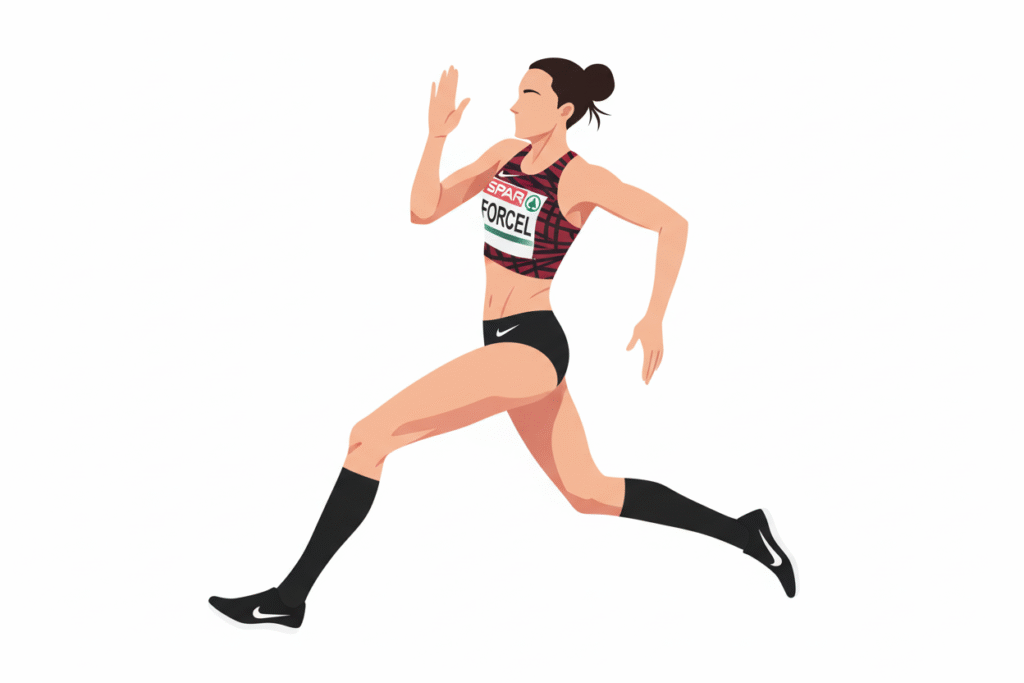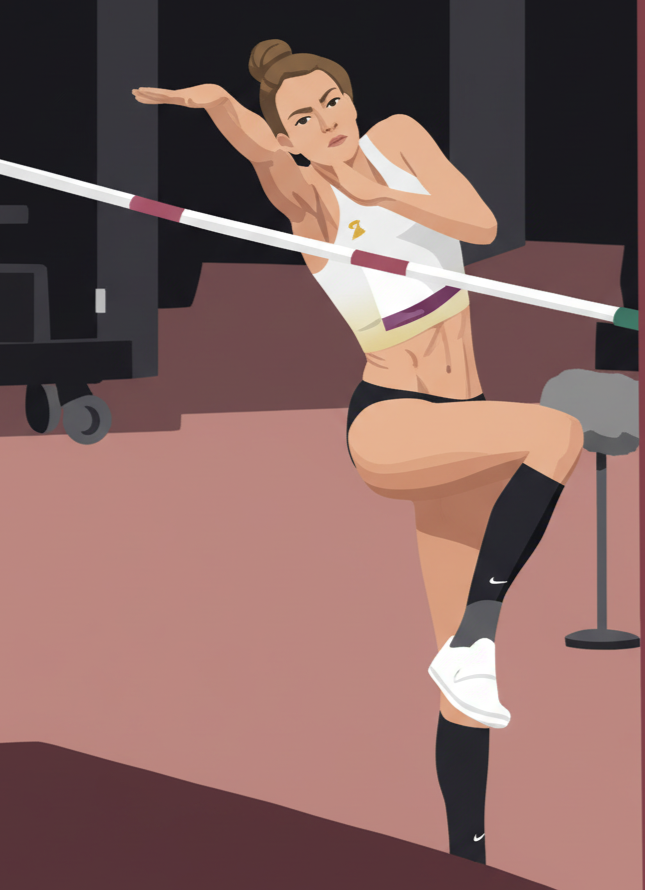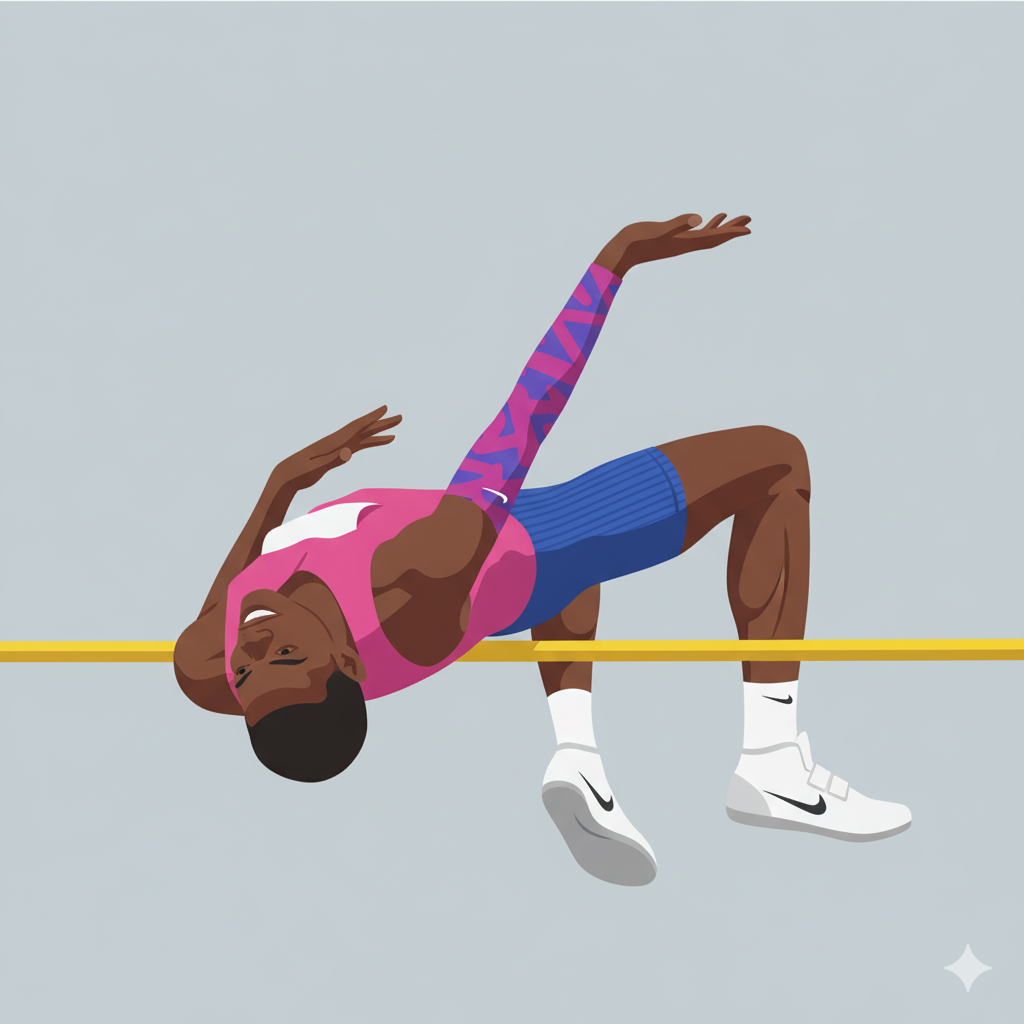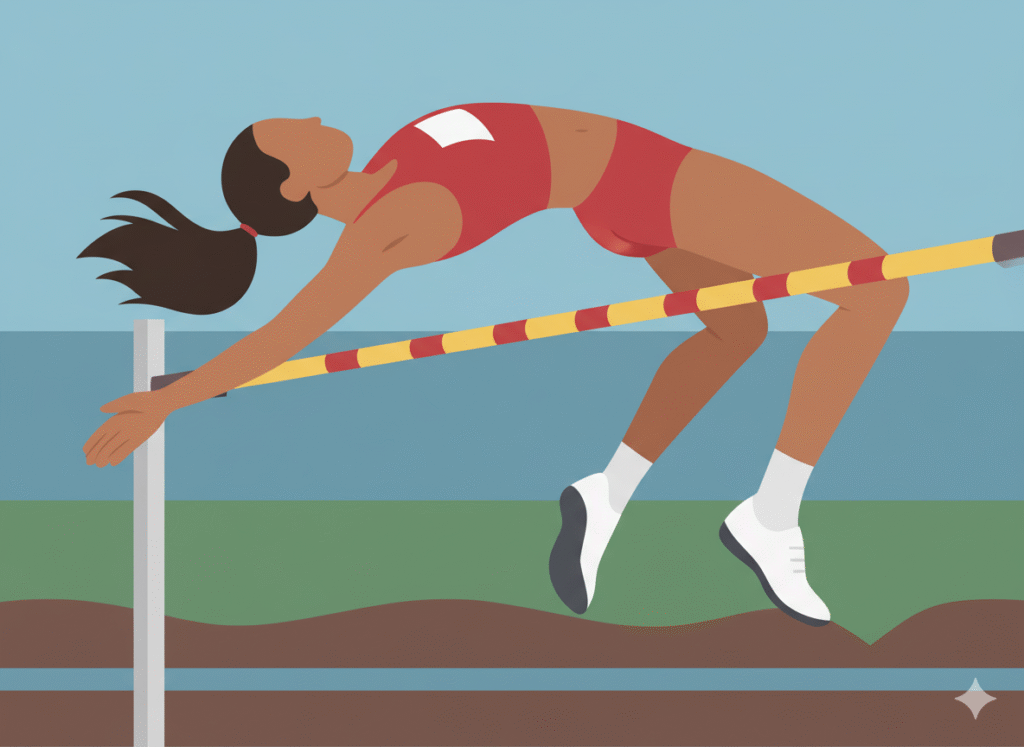High jump flight techniques: The flight phase is a critical component of high jump performance, determining how effectively an athlete can clear the bar. By mastering expert techniques and body positioning, jumpers can optimize their flight, increase their height clearance, and achieve better overall results. This article explores the key methods and practices essential for enhancing the flight phase, including the renowned Fosbury Flop technique, to help athletes elevate their high jump capabilities.
Whether you’re a competitive athlete looking to break records or a coach guiding jumpers to new heights, understanding the nuances of the flight phase can make the difference between clearing the bar and knocking it down. The moments spent in the air—from takeoff to landing—require precision, body awareness, and technical mastery that only comes through dedicated practice and knowledge of proper form.
In high jump, the athlete who can efficiently convert horizontal momentum into vertical lift while maintaining optimal body positioning during flight holds a significant advantage. Let’s dive into the techniques that can help you master this crucial aspect of high jumping and take your performance to new heights.
High Jump Flight Techniques: Perfecting the Approach Run
The approach run is the foundation upon which every successful high jump is built. This critical phase sets up everything that follows, particularly the flight phase where the actual clearance occurs. A well-executed approach doesn’t just get you to the takeoff point; it creates the precise conditions needed for optimal flight.
Consistency is paramount when developing your approach run. Elite high jumpers typically use between 8-12 strides in their approach, with each stride carefully measured and practiced until it becomes second nature. This consistency ensures that your body is in the exact position needed for takeoff every single time, eliminating variables that could compromise your flight phase.
The curve in your approach run isn’t just tradition—it’s physics at work. Running in a J or C-shaped curve creates centrifugal force that helps tilt your body away from the bar during takeoff, setting up the proper lean for the Fosbury Flop technique. This curved approach must be gradually accelerated, with the final three steps often being the most crucial for generating the right combination of speed and control.
When perfecting your approach, focus on rhythm rather than just raw speed. Many beginners make the mistake of sprinting toward the bar, which often results in an uncontrolled takeoff. Instead, establish a rhythm that allows for acceleration while maintaining the technical precision needed for a proper plant and takeoff. Your last few strides should feel powerful and deliberate, preparing your body for the explosive movement that initiates the flight phase.
- Maintain a steady pace to build momentum without losing control.
- Incorporate strides that align with the desired takeoff angle.

High jump flight techniques: Optimal Takeoff Techniques
The takeoff phase bridges your approach run and flight, serving as the launch pad for your jump. Mastering this critical moment requires precise timing, positioning, and power application to optimize your flight trajectory.
Plant foot positioning is crucial for an effective takeoff. Your plant foot should land approximately 60-80 centimeters from the vertical plane of the bar, with your body leaning slightly away from the bar. This positioning allows for maximum conversion of horizontal momentum into vertical lift while setting up the proper rotation needed for the flight phase.
The arms play a vital role in generating upward momentum during takeoff. As your plant foot makes contact with the ground, your arms should initiate a powerful upward swing in a synchronized motion. This arm drive contributes significantly to your vertical velocity and helps initiate the rotational movement needed for the Fosbury Flop technique.
Penultimate step preparation is often overlooked but is critical for optimal takeoff. The second-to-last step before takeoff should be slightly longer than your normal stride, allowing you to lower your center of gravity. This creates a ‘loading’ effect, similar to compressing a spring, that can be released explosively during the final takeoff step.
Body alignment during takeoff directly impacts your flight phase efficiency. Your takeoff leg should be nearly straight (though not locked) at the moment of maximum force application, while your free leg drives upward with knee bent. Your torso should maintain a slight backward lean relative to the bar, setting up the arching position needed for clearing the bar during flight.
- Focus on explosive power from the plant foot to drive upward.
- Ensure body alignment to transition seamlessly into the flight phase.

High jump flight techniques: Mastering the Fosbury Flop
The Fosbury Flop revolutionized high jumping when Dick Fosbury introduced it to the world at the 1968 Olympics. Today, it remains the technique of choice for elite jumpers because it allows athletes to clear heights that would be impossible with traditional techniques. The genius of the Flop lies in how it positions the jumper’s center of gravity relative to the bar during the flight phase.
The defining characteristic of the Fosbury Flop is the back-first clearance over the bar. After takeoff, you rotate your body to face upward, creating an arch that allows your center of gravity to pass under the bar while your body passes over it. This biomechanical advantage is what makes the Flop so effective—your center of mass follows a path that’s actually lower than the height of the bar.
Timing your back arch is critical for successful bar clearance. The arch should begin as you reach the peak of your jump, with maximum extension occurring directly over the bar. This timing ensures that you clear the bar at its highest point while maintaining the fluid motion necessary for the complete technique.
Leg action during the Flop must be precisely coordinated. After takeoff, your lead leg begins to drop while your takeoff leg follows in a scissor-like motion. As you clear the bar, both legs should lift upward, forming an L-shape with your torso to avoid catching the bar with your heels. This leg action helps maintain rotational momentum while keeping your lower body clear of the bar.
Head position influences your entire body’s movement during flight. Keep your head neutral (neither looking up nor down) until you’ve cleared the bar, then tuck your chin slightly to help initiate the final phase of the rotation. Many jumpers make the mistake of looking for the bar or the landing mat, which can prematurely alter their body position and cause a failed attempt.
- Arch the back over the bar to create a clearance path.
- Swing the lead leg and follow with the trail leg to maintain momentum.

High jump flight techniques: Enhancing the flight phase in high jump requires a combination of refined techniques, optimal body positioning, and dedicated training. By mastering the approach run, perfecting takeoff techniques, adopting the Fosbury Flop, and focusing on flexibility and strength, athletes can significantly improve their ability to clear higher bars. Incorporating data-driven training further allows for continuous improvement and peak performance. Embrace these expert strategies to elevate your high jump abilities and achieve new personal bests.
It’s important to remember that mastery of the flight phase doesn’t happen overnight. The techniques described in this article require patient, deliberate practice with an emphasis on quality repetitions rather than quantity. Each component—from the curved approach to the back arch over the bar—must be practiced individually before being integrated into a complete jump.
Consistent feedback, whether from a coach, video analysis, or performance data, is essential for continued improvement. Be willing to make small, incremental adjustments to your technique based on this feedback, understanding that these minor changes often lead to significant performance breakthroughs over time.
Ultimately, successful high jumping is as much psychological as it is physical and technical. Approaching each height with confidence, visualizing successful clearances, and maintaining focus throughout the entire jump sequence are mental skills that complement the physical techniques outlined here. By bringing together physical preparation, technical mastery, data-informed training, and mental fortitude, you can unlock your full potential in the high jump and experience the unique satisfaction of clearing heights that once seemed impossible.

